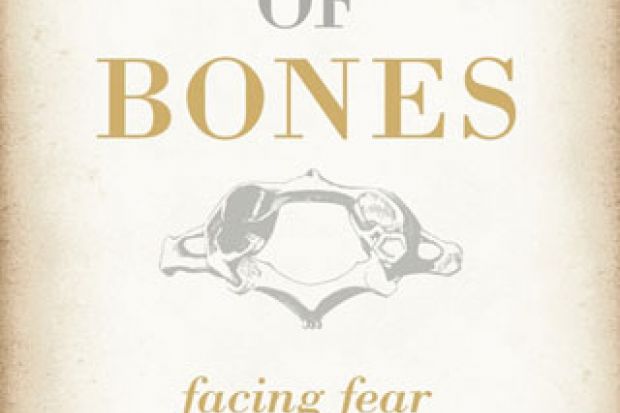This is a book that in many ways resists simple classification. Part memoir, part travelogue, part theological and philosophical meditation on human mortality, this is an account of a journey that is both literal and metaphorical. Physically, Denise Inge travels through Eastern and Central Europe to visit four ossuaries or charnel houses. These encounters, not just with the dead but with the strange, unfamiliar and sometimes ghoulish, act as catalysts for an inward journey: a descent into the terrain of our collective fears and anxieties about death. Yet the book’s disquieting subject matter and the candid, unflinching way Inge addresses it does not make for morbid reading. Rather, this is a book full of tenderness, hope and love. Her encounters with the dead lead her to a renewed reverence for life, while a sharper awareness of mortality prompts her to feelings of empathy, compassion and respect for fellow humans both living and dead.
Inge begins her journey with the discovery that her new home is built on top of a medieval ossuary. (She owes her unusual domestic arrangements to the fact that when her husband was appointed to the bishopric of Worcester, the family moved into the bishop’s official residence in the cathedral complex, constructed immediately above a pre-Reformation Benedictine charnel house.) The realisation that she is living in such close proximity to – even sharing a home with – the dead, and the unsettling feelings this arouses, becomes the impetus for her investigation of charnel houses, what they reveal about attitudes towards mortality, and how these attitudes have changed over time.
The four charnel houses she visits (Czermna in Poland, Sedlec in the Czech Republic, Hallstatt in Austria and Naters in Switzerland) have their own singular histories, with each responding differently to the particular needs of the human communities they serve and whose remains they store. The so-called Skull Chapel of Czermna, for instance, which dates from the late 18th century, was built by the parish priest when he came across mass graves of the victims of the Thirty Years War of 1618-48, as well as the more recent Silesian Wars between 1740 and 1763. For Inge, the Skull Chapel’s significance lies in the very anonymity of the assembled bones on display. The remains of former enemies are housed side by side: those differences of religion, nation and ethnicity that produced the slaughter in the first place are rendered meaningless by the biological process of decay that strips human cadavers of their individuality. The idea of death as the great leveller is therefore given a peculiarly literal resonance, sending out a powerful message of reconciliation in a corner of Europe racked by conflict for centuries.
What adds a greater poignancy and authority to the author’s reflections on mortality is the fact that she was diagnosed with inoperable cancer at the time she was undertaking her journey. Although she is reticent about her illness, mentioning it only in the introduction and the conclusion to the book, an awareness of the preciousness and fragility of life suffuses everything she writes. Inge died before the book’s publication, and our knowledge of this cannot help but lend even greater resonance to her extended meditation on the profound mystery that death remains.
A Tour of Bones: Facing Fear and Looking for Life
By Denise Inge
Bloomsbury, 224pp, £16.99 and £10.99
ISBN 9781472913074 and 3081 (e-book)
Published 6 November 2014
Register to continue
Why register?
- Registration is free and only takes a moment
- Once registered, you can read 3 articles a month
- Sign up for our newsletter
Subscribe
Or subscribe for unlimited access to:
- Unlimited access to news, views, insights & reviews
- Digital editions
- Digital access to THE’s university and college rankings analysis
Already registered or a current subscriber?





